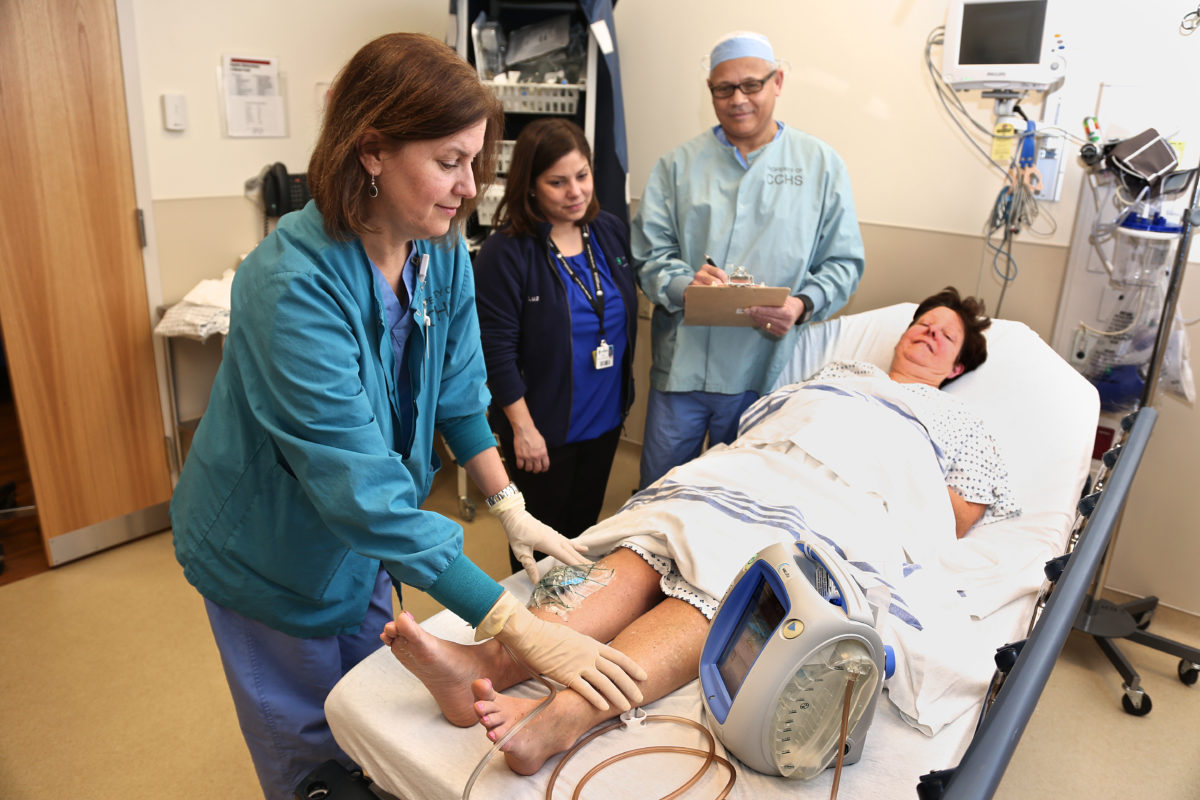Strong partnerships forged between the Value Institute’s Center for Organizational Excellence and the Department of Pathology and Laboratory Services are yielding new opportunities to design and implement innovative approaches to care.
“Just as we know the value of treating every patient as a partner, we also know the tremendous value that is created when we strengthen our partnerships within our organization,” said Vernon L. Alders, MHCDS, MBA, MSW, corporate director of the Center for Organizational Excellence. “We are helping our organization achieve its goals by forging new, strategic relationships with our service line and essential service leaders and, through our Lean Six Sigma training program, providing the tools and resources to develop our valued employees.”
Lean Six Sigma is a customer-focused methodology that trains employees to bring together a multidisciplinary team of stakeholders to analyze a problem and create sustainable advances.
“I’ve looked for people who would be strong Lean Six Sigma candidates and sought to remove roadblocks to the completion of projects,” said Cheryl Katz, MS, MT, vice president of the Department of Pathology and Laboratory Services. One of those people is Medical Laboratory Scientist Luz Reyes-Laureano, MLS, ASCP, who collaborated closely with Perioperative Services Senior Business Analyst Kevin R. Hawkins. Together, they spearheaded a Black Belt project through Organizational Excellence and Laboratory Services to ensure that there is an accurate record of where wound packing is applied so the dressings can be properly replaced.
Christiana Care treats about 600 wounds each month. The project leverages electronic health record technology to simplify record keeping and reduce the likelihood of error in wound packing replacement.
Three years prior, Organizational Excellence and Laboratory Services partnered on a Green Belt project led by Reyes-Laureano that focused on improving the turnaround rate in Laboratory Services for urinalysis results at Christiana Care’s Emergency Departments. A report found that 78 percent of 26,000 urinalysis samples met the turnaround target of 30 minutes. Laboratory staff was confident that they could increase that percentage. As a result of applying Lean Six Sigma principles, the team arrived at nine suggestions for improving lab efficiency and, within the study period, the percentage of successful results within the target time increased to 93 percent.
Today, because of this effort, ED clinicians experience much shorter wait times to receive relevant data in treating infections and obtaining vital information on kidney disease and diabetes, said Reyes-Laureano, who recently was promoted to laboratory supervisor at the Middletown Emergency Department.
A blood culture preservation Green Belt project was the result of another partnership between Organizational Excellence and the Department of Pathology and Laboratory Services.
In 2012, Christiana Care’s blood culture contamination rate was 3 percent. “We wanted to lower the rate,” said Stephanie Kelly, MLS, MBA, manager of laboratory outreach. “Contamination of a blood culture can lead to additional testing, improper antibiotic usage, increased hospital costs and increased length of stay.”
Initially, Kelly’s team considered having phlebotomists draw blood cultures in place of ED nurses. Although this idea appeared to be a quick fix, it would not have been the most cost-effective choice. As the team gathered data, they learned that hospital phlebotomists were provided a disinfection sponge with 1.5 ml of an antiseptic cleaning solution — more than twice the volume of the antiseptic in ED kits.
They proposed changing the volume of the antiseptic to the larger 1.5 ml size in the ED, using a prescribed scrubbing motion to apply the antiseptic to a patient’s arm and establishing a standard protocol for blood culture collection.
During the study period, contamination rates were reduced to 0.83 percent. Maintaining this rate could lead to annualized savings of $39,000, according to the team’s report.
“Sometimes the improvement that’s most needed is something no one has thought of until you do a thorough analysis,” Kelly said.
Today, according to the ED nursing staff, the recommendations are making a difference in the antiseptic collection of blood cultures.
“This is the type of change we’re delighted to help bring about,” Katz said. “Not only are we now able to analyze blood cultures in the proper way and get the right pharmaceuticals to our patients at the right time, but Laboratory Outreach Manager Stephanie Kelly was able to partner and lead groups outside her department. It is a shining example of how partnerships advance the Christiana Care Way.”



